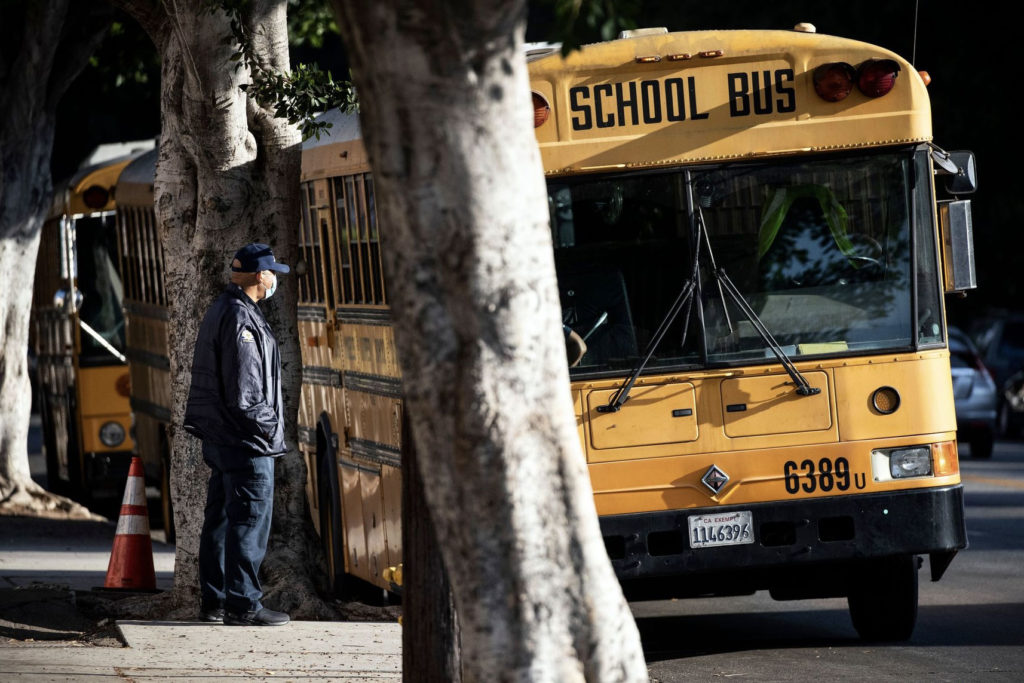Public-school education has gone from bad to worse. In theChicago Public Schools, only 26% of 11th-graders were at grade level in reading and math in 2019. Remarkably, the school system had a record-high graduation rate of nearly 84% in 2021. Those students must have had strong senior years!This is why over half of first-year community-college students in the U.S. take at least one remedial course in reading or math. In the U.S., 43 million adults are illiterate. This is a disgrace.
In pre-pandemic California, only 32% of fourth-graders were at or above proficient for their grade in reading. Only 19% of eighth-gradeHispanics read at grade level, and only 10% of eighth-grade blacks did. Those who find disparate impact everywhere should be screaming from the rooftops that public education is racist. Instead, silence.
Despite these poor results, spending per student goes up each year. New York spent $25,139 per student in fiscal 2019. In California, it’s over $20,000. So why haven’t outcomes improved? Parents know why. Bad teachers don’t get fired. Because of tenure, even some capable teachers mail it in. Bad school districts don’t get fixed. Caps on charter schools, even those with proven records, limit their ability to put pressure on public schools. Teachers unions are all-powerful.
Silicon Valley entrepreneur Dave Welch is trying to improveCalifornia’s education system. He tells me we need “accountability of quality education.” You may recall the 2014 Vergara v. California decision, a suit Mr. Welch and others funded. Filed on behalf of nine public-school students, the ruling found that five California statutes related to teacher tenure, firing bad teachers and layoff policy violated the state’sConstitution. In his ruling, Los Angeles County Superior Court Judge Rolf M. Treu noted, “Evidence has been elicited in this trial of the specific effect of grossly ineffective teachers on students. The evidence is compelling. Indeed, it shocks the conscience.”
No matter. The California Court of Appeal reversed Vergara in 2016 stating: “With no proper showing of a constitutional violation, the court is without power to strike down the challenged statutes.” In the court’s view, the California Constitution guarantees merely a free public education.
So Mr. Welch was back where he started, with, he says, an“educational system that doesn’t prioritize its actions to educate the children to a degree necessary to function in our society.” Bad teachers are constitutionally protected.
But with his background as a logically thinking Cornell-educated engineer, he set out to prove bad teaching was “a constitutional violation.” In the Democrat-controlled California Legislature, that was going to be a tough sell. Teachers were the fourth-largest campaign contributors to California’s legislative races in 2020 behind energy, prison guards and healthcare. “TheLegislature won’t listen to the people,” Mr. Welch grumbles.
Fortunately, Californians can change their constitution through ballot initiatives. And voilà, a group named Kids First including Mr. Welch filed the Constitutional Right to a High-Quality Public Education Act. Here’s the key provision: “Any law, regulation, or policy, or any official action affecting students generally, which does not put the interest of the students first, shall be deemed to deny this right.”
Critics will focus on the lack of a definition for “high-quality public education.” Mr. Welch explains, “The metric for existing or any future legislation, and every school board decision, is ‘Does it make students better or worse?’ ” Pretty simple, yet I suspect it would be deadly effective.This would, by necessity, launch many lawsuits to challenge the status quo of tenure, of the inability to fire bad teachers and of everything else. It would become the guiding principle for any new legislation: Does it put kids first?“The corollary to this right is the existence of a high-quality teaching profession,” Mr. Welch says.
And then there is this provision: “The remedies for this right shall not include new mandates for taxes or spending.” It’s smart for two reasons. It will help the initiative pass, and history has shown that throwing money at the problem doesn’t work.
The cost? Around $8 a signature—they need a million to get on the ballot—plus the cost of the inevitable TV-ad battle with the California Teachers Association and its310,000 members. That could get expensive.
I asked Mr. Welch why he wants to spend his time and hard-earned capital on this. “What we’re doing to our kids is horrific,” he says. “I can’t think of a greater loss of potential than the poor quality of education of our children. And all the other societal problems that come with it. The prison system uses educational outcomes—fourth-grade reading levels—to determine what size correctional facilities they’ll need.” Scary.
I think a successful KidsFirst ballot initiative would do more for “equity” than any government program.“The best way in making a productive functioning society is making sure everyone lives up to their potential,” Mr. Welch says. “Education is one of the basic pillars of American democracy.” That pillar is crumbling.
